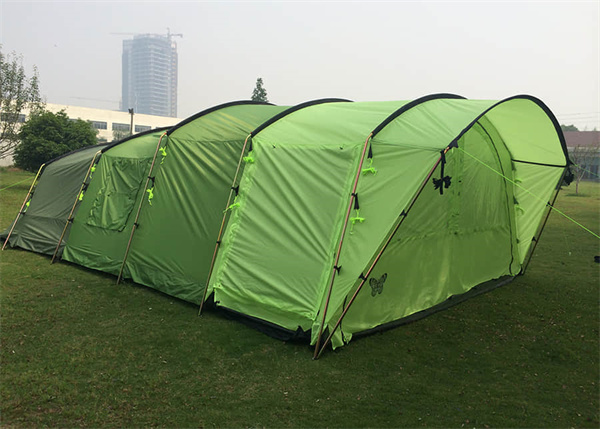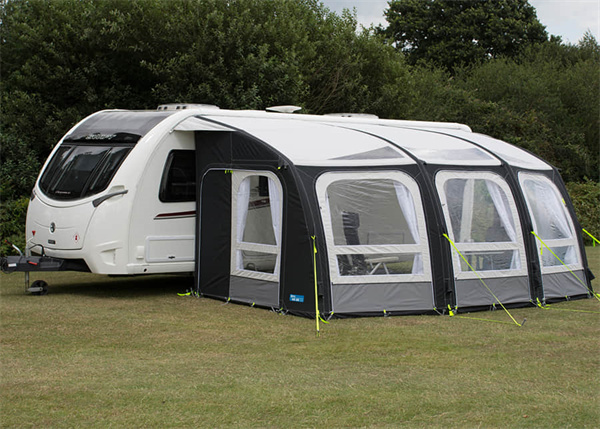There are many benefits to ripstop tent fabric that are more than just a measure of protection from the elements. The reason being, is because it has good stability, is breathable and waterproof. This article will discuss 10 important points about ripstop tent fabric so you can decide if it is the right choice for your next purchase.
What is Ripstop Tent Fabric?
ripstop tent fabric is a woven fabric typically made from nylon, polyester, or a blend of the two fibers. The fabric is reinforced with a grid of thick stitches, creating a strong and durable material that is resistant to tearing and ripping. Ripstop tents are designed to withstand the rigors of outdoor use, making them an ideal choice for camping, backpacking, and other activities in harsh conditions.
The reinforcing grid of stitches prevents tears from spreading, making ripstop tent fabric much stronger than traditional woven fabrics. The dense weave of the fabric also makes it resistant to wind and moisture, providing excellent protection from the elements. Ripstop tents are available in a variety of weights and colors to suit your needs, and can be treated with waterproofing agents for even more protection from the elements.

What are the Benefits of Ripstop Tent Fabric?
ripstop tent fabric is a type of woven fabric with a reinforcing thread running through it at regular intervals. This makes the fabric much more resistant to tearing and ripping, making it an ideal choice for tents and other outdoor gear.
There are many benefits to using ripstop tent fabric, including:
- Increased Durability: The reinforcing threads make ripstop fabric much more resistant to tearing and ripping. This means that your tent will be able to withstand more wear and tear, making it last longer.
- Lightweight: ripstop tent fabric is very lightweight, making it ideal for tents and other gear that needs to be light and easy to carry.
- Water Resistant: ripstop tent fabric is also water resistant, helping to keep you dry in wet conditions.
- Breathable: Despite being water resistant, ripstop fabric is still breathable, allowing air to circulate inside your tent and preventing condensation buildup.
How to Prevent Dirt and Oil Spills from Affecting Your Fabric
It’s important to know how to prevent dirt and oil spills from affecting your fabric because, if not taken care of properly, they can cause long-term damage. Here are some tips on how to prevent dirt and oil spills from affecting your ripstop tent fabric:
- Always blot the spill with a clean, dry cloth as soon as it happens. Do not rub or scrub the spill, as this will only spread the stain and make it harder to remove.
- If the spill is oil-based, gently apply a small amount of dish soap to the area and blot again. Repeat this process until the stain is gone.
- If the spill is water-based, simply blot it dry with a clean cloth. You may need to repeat this process several times until the area is completely dry.
Why You Should Choose a Good Quality Fabric
There are a variety of reasons why you should choose a good quality ripstop tent fabric for your tent. Perhaps the most important reason is that a good quality fabric will better protect you from the elements. If you are camping in an area that is prone to bad weather, or if you simply want peace of mind knowing that your tent is well-protected, then opting for a higher quality fabric is a wise choice.
In addition to better protection, another reason to choose a good quality fabric for your tent is that it will likely last longer. A cheap, lower quality fabric will not stand up to wear and tear as well as a more expensive, higher quality option. If you plan on using your tent regularly, then it makes sense to invest in one that will last.
Finally, choosing a good quality fabric for your tent can also provide added comfort. A thicker, more durable fabric will offer more insulation from the cold ground and will be less likely to tear or leak if you accidentally brush up against a sharp object. If comfort is a priority for you, then spending a little extra on a high-quality fabric is worth it.
The Importance of a Taped Seam
A taped seam is a water-resistant or waterproof barrier that is applied to the inside of a tent’s fly. The tape seals the needle holes made during the sewing process, which prevents water from seeping through and ruining your camping trip.
While most modern tents come with some kind of taped seams, it’s important to know that not all tapes are created equal. Some cheaper tents use lower quality tapes that are more likely to peel off over time or in extreme weather conditions. When shopping for a new tent, be sure to ask about the quality of the taped seams.
Taped seams are an important part of any tent, and can mean the difference between a dry night’s sleep and a soggy one. Be sure to pay attention to the quality of the seams when shopping for your next tent, and you’ll be able to enjoy many comfortable nights under the stars.
A Few Other Considerations when Buying Tent Fabrics
When you’re looking at different fabrics for your tent, there are a few other considerations to keep in mind:
-ripstop tent fabric should be waterproof and breathable. Waterproofing will help keep you dry in case of rain or dew, while breathability will prevent condensation from building up inside the tent.
-The fabric should also be lightweight and packable. You don’t want to be lugging around a heavy tent, so look for something that’s easy to carry.
-Finally, make sure the fabric is durable. Tent walls are subject to a lot of wear and tear, so you need something that can withstand some abuse.
Conclusion
No matter what kind of tent you have, the ripstop tent fabric is always one of the most important parts. The right fabric can make the difference between a comfortable night’s sleep and a sleepless, sweaty night spent tossing and turning. With so many different fabrics on the market, it can be tough to know which one is right for you. We hope this article has helped you understand a little bit more about tent fabric and how to choose the right one for your needs. Do you have any tips for choosing the right tent fabric? Share them with us in the comments below!



